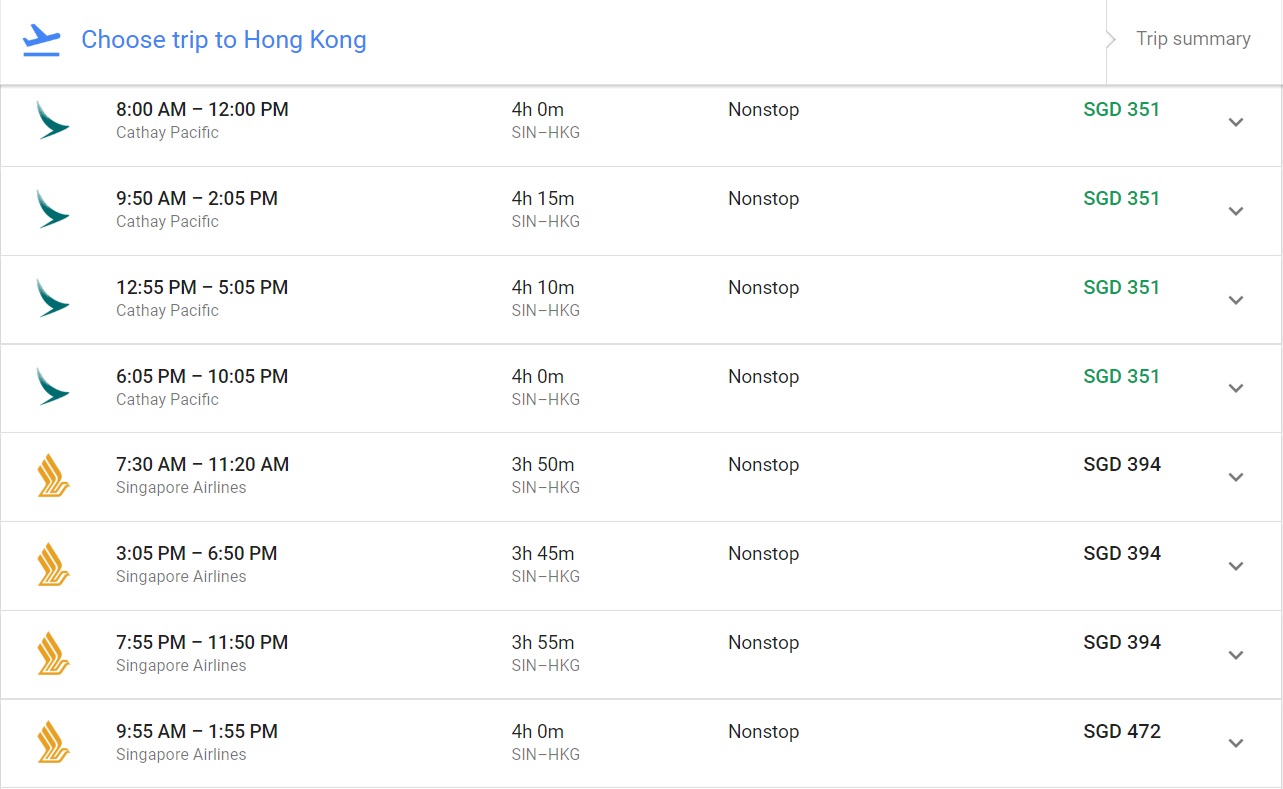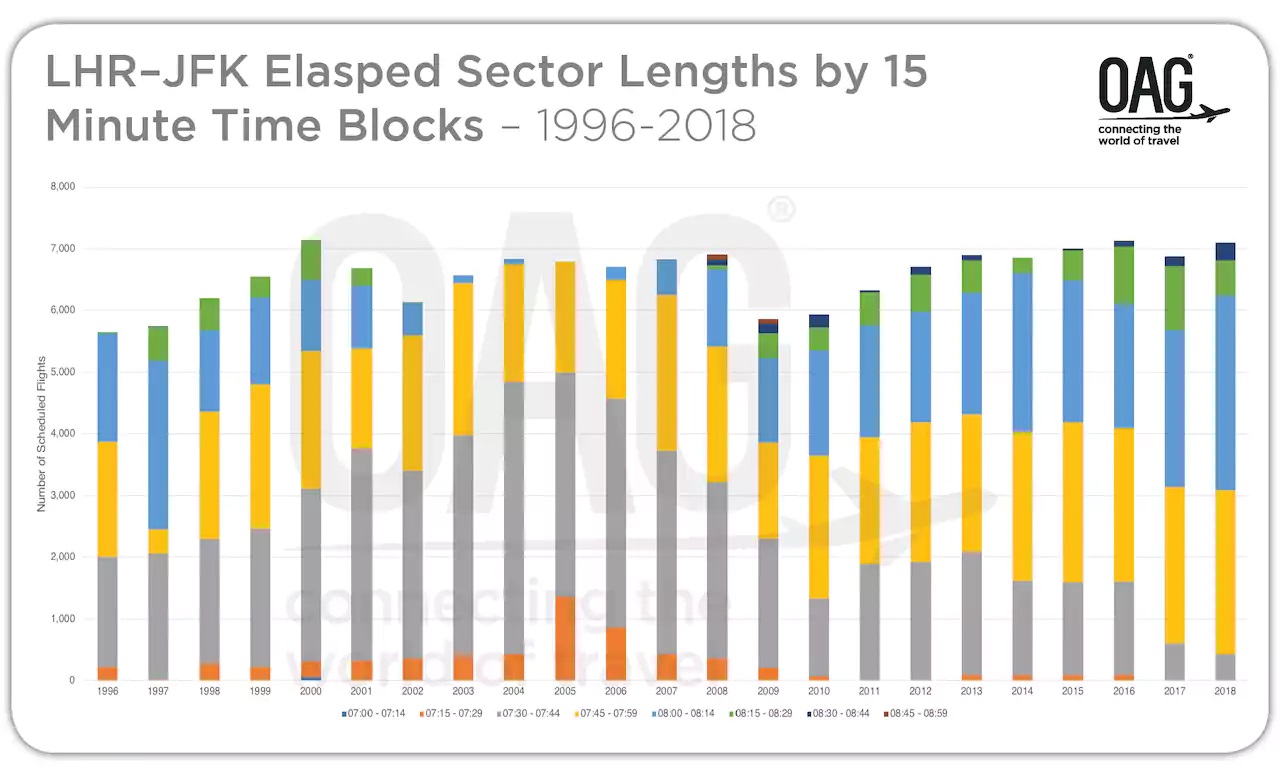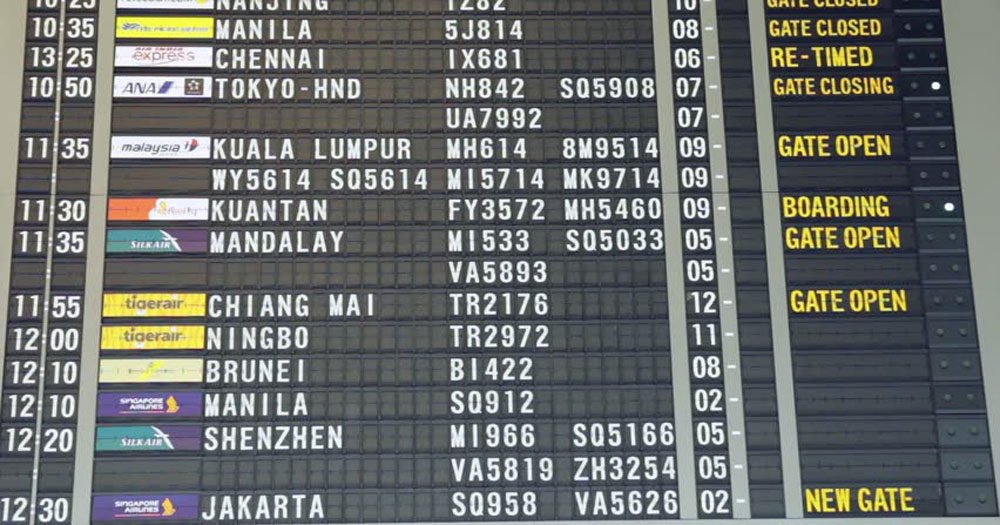Many advances in aviation have been made over the years, such as newer planes and fancier in-flight amenities being introduced constantly.
However, savvy travellers may notice that flight times have not been getting any shorter despite the many advances and gains made each new year in aviation technology.
In fact, they are getting longer.
Planes are designed to fly slower
Yes, planes are actually engineered to fly slower these days.
The Boeing 707 was largely considered to be the first commercially-successful jetliner, and dominated air travel in the 1960s.
The cruising speed of the Boeing 707 was approximately 977km/h.
The discontinued Concorde was a supersonic jet that boasted a mind-boggling cruising speed of 2,158 km/h, more than twice the speed of modern airplanes today.
It can travel between New York and London in three-and-a-half hours, when a similar trip today will take more than seven hours.
On the other hand, the Boeing 747, also known as the Queen of the Skies, is the fastest commercial passenger airliner that is still in operation today.
Its cruising speed? 920km/h.
Shorter flights better?
There was a time when reaching a destination more quickly was appealing for airlines.
A shorter flight was not only more appealing to customers -- it also minimises crew costs.
The airline will also be able to better utilise its aircraft with shorter flight times.
However, with fuel costs steadily increasing over the past few decades, this is no longer the case.
New generation aircraft are now designed with fuel efficiency in mind, rather than speed.
The latest generation Boeing 787 Dreamliner and Airbus 350 only clocks in a cruising speed of 917km/h and 907km/h respectively.
 Newer but slower. Image via Boeing.
Newer but slower. Image via Boeing.
So, it is strange to find out that more than 50 years after the introduction of the Boeing 707, our planes have actually gotten slower.
Saving money
Airlines employ a method called cost index in order to optimise an aircraft's speed.
It is a number used in an aircraft's flight management system, which gives the ratio between the unit cost of time and unit cost of fuel.
Basically, it is possible to find out the optimal speed that will result in the lowest cost of a particular flight.
This also means that besides the cruising speed of the aircraft, the cost index that different airlines utilise also determines the speed of the aircraft, and subsequently, how long the flight takes.
Low-cost carriers, for example, tend to employ a lower cost index, meaning they deliberately instruct pilots to fly a little bit slower.
In 2013, Irish low-cost carrier Ryanair instructed its pilots to fly slower, adding two minutes to every hour of flight.
The cost savings can be significant.
A 2008 Associated Press report revealed that US airline Jetblue saved US$13.6 million a year by adding two minutes to each flight.
It is clear that financial reasons have a big part to play for our increasing flight times.
Manipulating time
Here's a quick quiz. If a Singapore Airlines flight and a Cathay Pacific flight both depart Singapore at 12pm, and arrive in Hong Kong at 4.15 pm, which airline is late?
The answer is Singapore Airlines.
While both airlines likely take the same time to travel to Hong Kong, the key difference is the scheduled flight time given by the respective airlines.
 Image via Google Flights.
Image via Google Flights.
Cathay Pacific's flights are scheduled to take between 4 hours and 4 hours 15 minutes, whereas Singapore Airlines' flights are scheduled to take between 3 hours 45 minutes and 4 hours.
Since industry practice considers an aircraft to be punctual if it arrives within 15 minutes, the Singapore Airlines flight will be labelled as late, whereas the Cathay Pacific flight will be punctual, even when both flights arrived at the same time.
This is the reason why most airlines choose to add extra time into their schedule, to improve their own punctuality rating.
This is known as schedule padding, and is also used to ensure an airline is resilient to unexpected delays.
There is evidence to show that over the years, schedule padding has become more prevalent.
 Image via OAG.
Image via OAG.
According to the chart above, for a flight from Heathrow Airport, London to John F. Kennedy Airport, New York, most airlines scheduled between 7 hours 30 minutes and 8 hours 15 minutes.
A few airlines even scheduled it to be 7 hours 15 minutes, which is relatively short.
Fast forward to 2018, and the longest scheduled flight for this route is up to 8 hours 44 minutes.
Legitimate?
While schedule padding is widely acknowledged by industry experts, airlines tend to deny this excessive padding.
After all, a well-padded schedule can cause late flights to be considered punctual, leading to skewed punctuality ratings.
However, there might be legitimate reasons for the increasing schedule padding over the years.
Flights routes and airports are getting busier, and runways can sometimes be located far away from the terminal.
Sufficient allowance for time may be required for congested airports to allow for a longer taxiing time.
[related_story]
Schedule padding works because airline punctuality is based on when the plane arrives at the destination, rather than when the plane departs from the origin.
With sufficient schedule padding, a flight that departs even an hour late can still arrive well on time, according to aviation authorities.
The next time you spend 30 minutes on the runway and wonder how you still made it to your destination early, now you know.
Top Image via Wikimedia Commons
Content that keeps Mothership.sg going
??
What to do for weekend ah? Here are some nice places to chill this week.
???
We can't guarantee that you'll see chocolate chip cookies, peperoni pizza, or strawberries quite the same way ever again...
?
Travel Malaysia like a boss with these tips.
??
Our writer "went from apprehensive to really enjoying it": find out what "it" is.
If you like what you read, follow us on Facebook, Instagram, Twitter and Telegram to get the latest updates.
